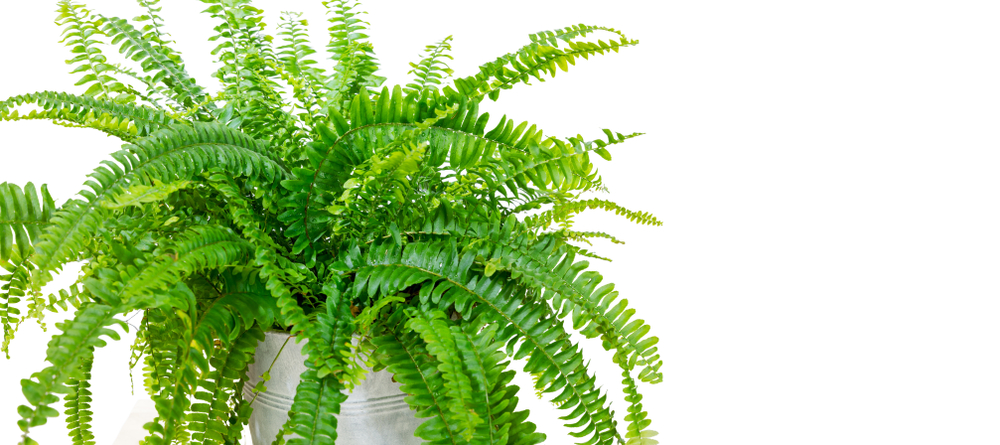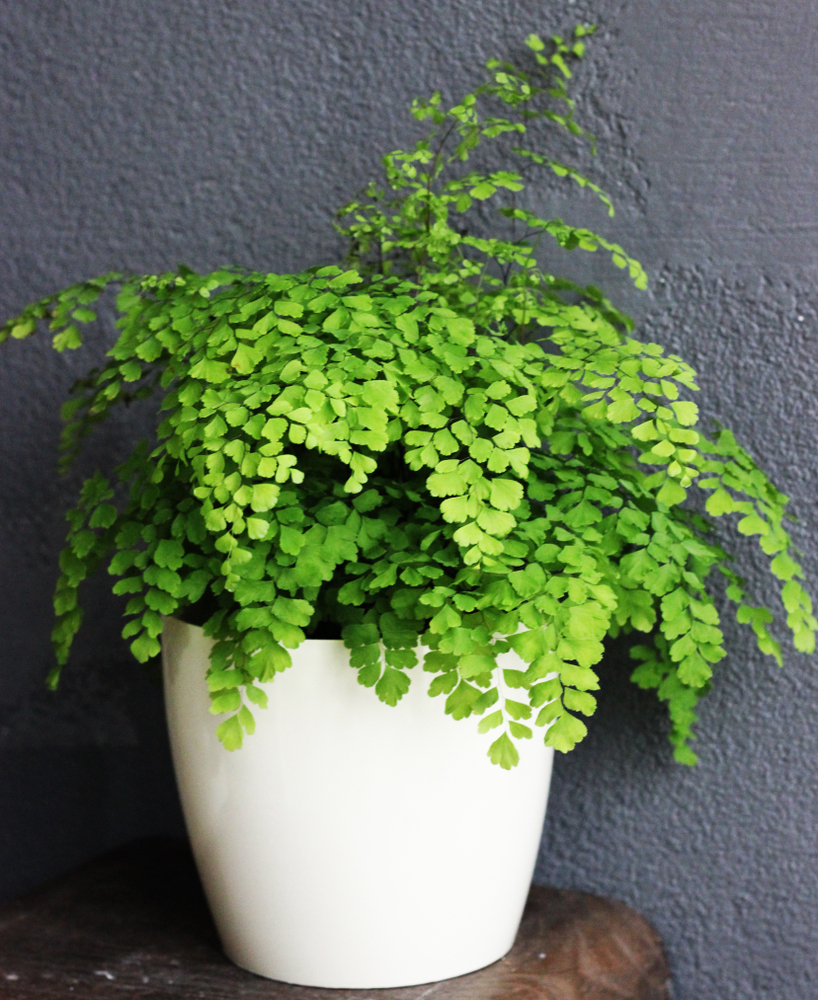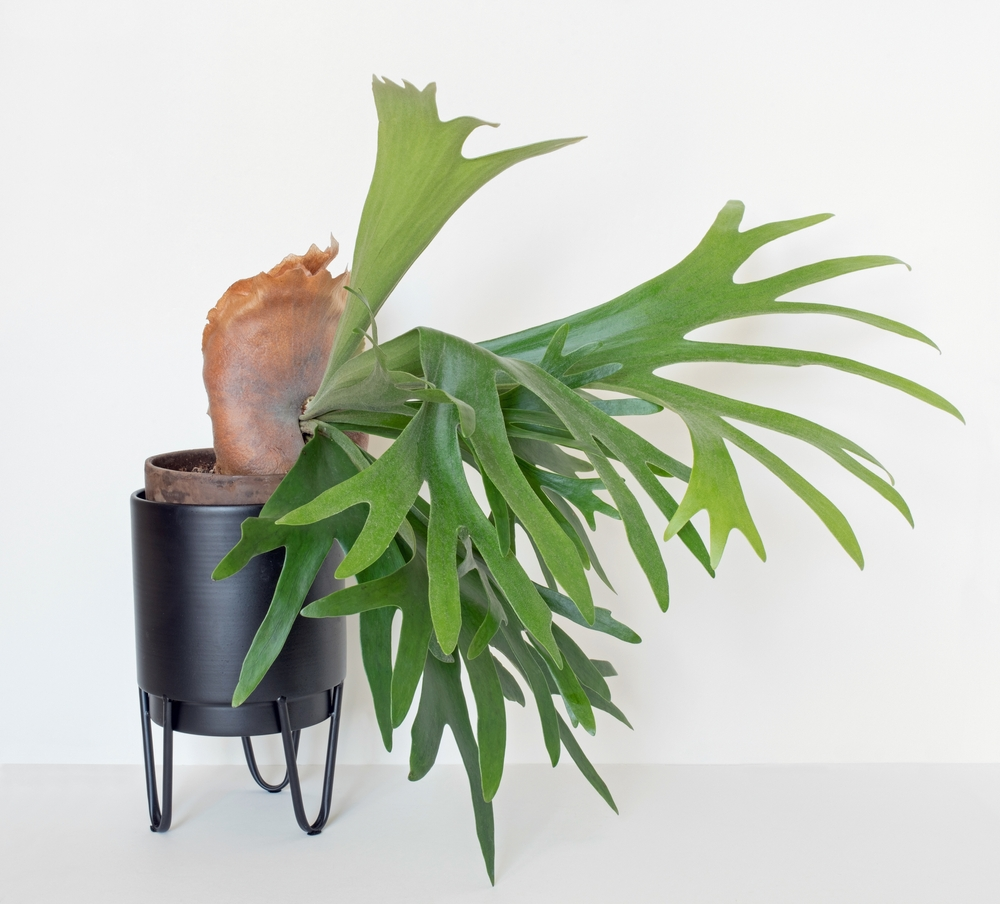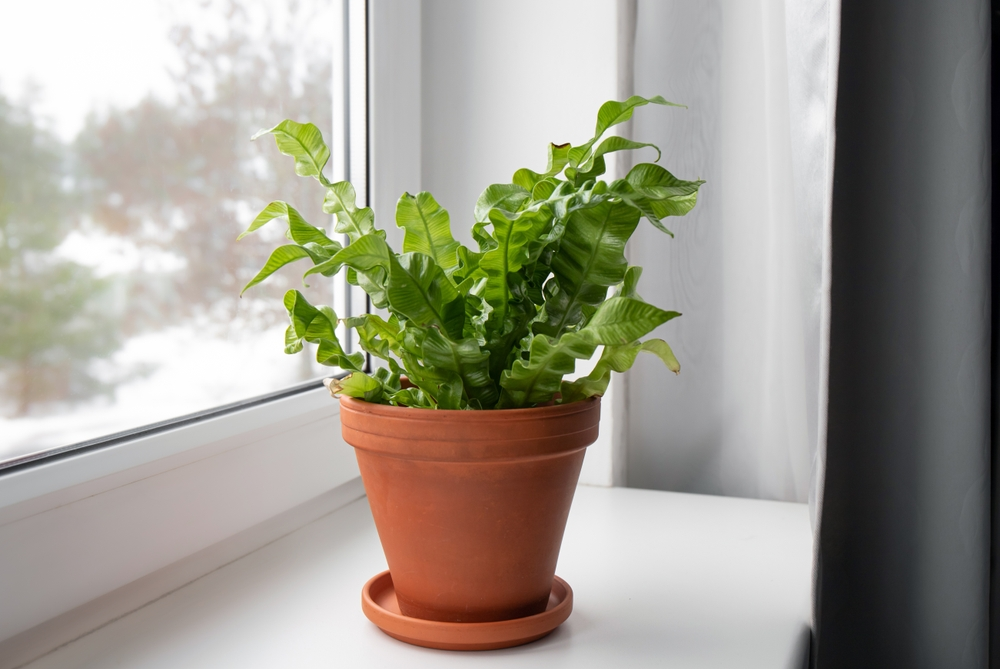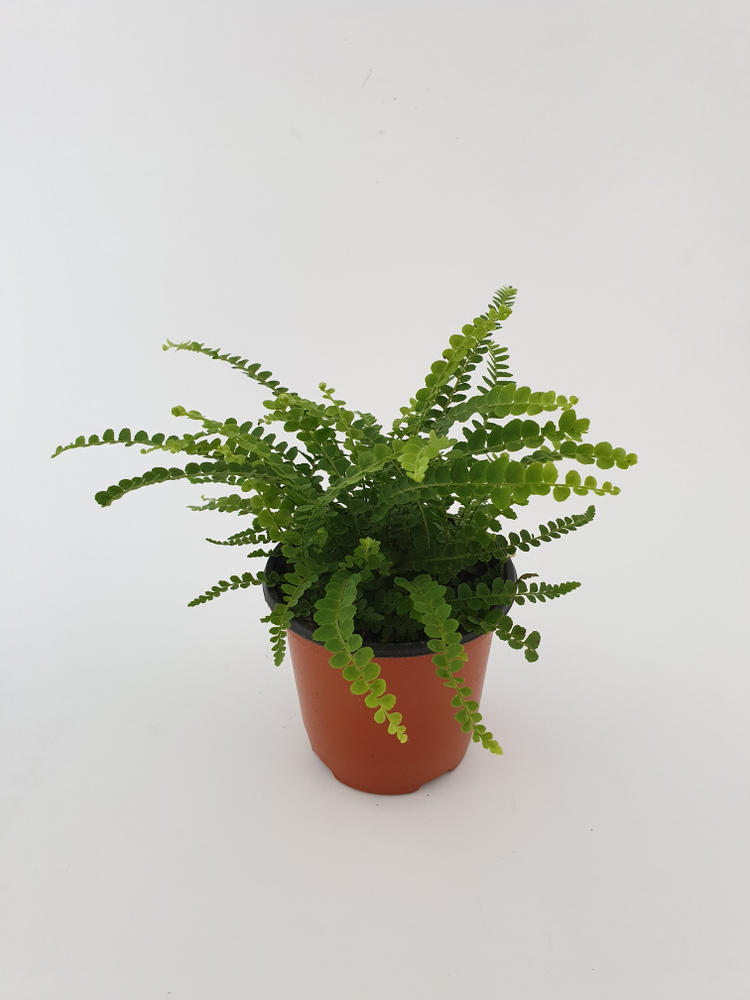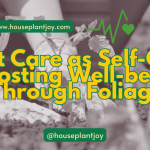HousePlantJoy is supported by our audience. When you purchase through one of our links, we may earn a small affiliate commission. As an Amazon Associate I earn from qualifying purchases. Your cost is not affected.
==================
Does fern care indoors seem hard for you? Read this article to learn more about caring for these luscious plants! Ferns are a captivating addition to any indoor environment. With their lush green foliage and intricate leaf patterns, they have a unique way of bringing a breath of fresh air into any indoor space. The art of keeping ferns indoors is not only about enhancing your interior aesthetics; it’s also about creating a relaxing, calming, and natural environment right inside your home. This article will walk you through growing and maintaining indoor ferns, ensuring they thrive and continue beautifying your space.
Indoor ferns are a diverse group of flowering plants, too, offering a wide range of leaf textures and sizes. Their ability to adapt and thrive in different indoor conditions makes them an excellent choice for a houseplant. They are generally easy to care for, although certain types might require specific conditions to flourish. Regardless, the satisfaction of nurturing these plants and watching them grow is well worth it.
The trend of keeping ferns indoors is a familiar one. Ferns have been used as indoor plants for centuries, dating back to the Victorian era when they symbolized affluence. Today, they are cherished for their air-purifying properties and the tranquility they bring into a space. Their timeless beauty and versatility make them a popular choice for interior design.
Benefits of Keeping Ferns Indoors
The benefits of keeping ferns indoors extend far beyond their aesthetic appeal. One of the most significant advantages of having indoor ferns is their ability to improve air quality. These plants are known for their excellent air-purifying qualities, helping reduce indoor air pollution by filtering harmful toxins. In an increasingly urbanized world, this is a simple and natural way to enhance your living environment.
Ferns also contribute to a healthier indoor climate by increasing humidity. They release moisture into the air, which can be particularly beneficial in dry indoor environments. This not only makes the air more comfortable to breathe, but it also helps to prevent dry skin and respiratory problems. It’s like having a natural humidifier in your home!
Beyond the health benefits, ferns have a calming effect on the mind and emotions. Their lush greenery brings a sense of serenity and peace to your home, creating a relaxing space to unwind and de-stress. Studies have shown that being around plants can reduce anxiety and promote feelings of well-being. So, by keeping ferns indoors, you’re not just enhancing your home’s aesthetics but also improving your mental health.
Types of Ferns Ideal for Indoor Spaces
Countless types of ferns can thrive indoors. Each variety has unique features and care requirements, allowing you to choose the perfect fern that suits your lifestyle and home environment. Among the most popular indoor fern plants for cultivation are Boston, Maidenhair, and Staghorn.
Boston ferns are a classic choice for indoor gardening. They are known for their arching fronds covered in small, delicate leaves. These ferns are relatively easy to care for, needing only moderate light and regular watering. Their lush green foliage and graceful growth habit make them an elegant addition to any room.
On the other hand, Maidenhair ferns are prized for their delicate, feathery fronds. They require more attention than Boston ferns, preferring high humidity and indirect light. Despite their care requirements, their beauty and elegance make them worthwhile.
Staghorn ferns are unique tropical ferns that grow on trees in their natural habitat. They are typically mounted on a board or hung in a basket indoors. These ferns have unusual, antler-like fronds, making them a fascinating and conversation-worthy addition to any indoor space.
Essential Indoor Fern Care: Understanding the Basics
Understanding the basic requirements of indoor fern care is crucial for their success. Most ferns prefer a warm, humid environment that mimics their natural rainforest habitat. They thrive best in indirect light, avoiding direct sunlight that can scorch their delicate leaves.
Watering is another essential aspect of fern care indoors. Ferns prefer consistently moist soil, but it’s important to avoid overwatering, which can lead to root rot. A good rule of thumb is to water your fern when the top inch of soil feels dry. It’s also a good idea to mist your ferns regularly, as this helps to maintain high humidity levels.
Feeding your ferns with a balanced houseplant fertilizer can also contribute to their overall health and vigor. Most ferns are light feeders, so a monthly application during the growing season (spring and summer) should suffice. Always follow the fertilizer package instructions to avoid overfeeding, which can lead to burnt foliage.
Tips for Keeping Ferns Indoors: Ensuring Healthy Growth
Proper care is essential to ensure the healthy growth of your indoor ferns. Apart from the primary care requirements, there are a few additional tips to consider when keeping ferns indoors.
First, Be Mindful of the Pot Size
Ferns prefer snug pots; repotting should only be done when the roots have filled the pot. When repotting, choose a pot slightly larger than the previous one to prevent root rot and waterlogging further.
Second, Ensure Good Air Circulation Around Your Ferns
This helps to prevent fungal diseases that can cause leaf drop. However, avoid placing your ferns in drafty areas or near heating or cooling vents, as drastic changes in temperature can harm them.
Lastly, Keep an Eye out for Pests
Ferns can occasionally be affected by common houseplant pests like aphids, spider mites, and mealybugs. Regular inspections of your plants and prompt treatment at the first sign of trouble can help keep your ferns healthy and pest-free.
Common Challenges in Indoor Fern Care and How to Overcome Them
Like any houseplant, ferns can encounter some challenges outdoors or indoors. Understanding these issues and how to overcome them can go a long way in maintaining the health of your ferns.
One common problem is brown leaf tips. This is often a sign of low humidity, easily remedied by increasing the moisture level around your ferns. This can be done by misting your plants regularly, placing a tray of water near your fern plants often, or using a humidifier.
Another challenge is yellowing leaves, which can be caused by various factors, including overwatering, inadequate light, or nutrient deficiencies. Determining the cause and correcting it is crucial for recovering your fern.
Finally, pest infestations can be a problem for indoor ferns. Regularly inspecting your plants for signs of pests and treating any infestations promptly can help ensure the health and longevity of your ferns.
Common Mistakes in Fern Care Indoor
When caring for ferns indoors, it’s easy to make mistakes, especially if you’re new to the world of houseplants. One common mistake is overwatering. While ferns like moist soil, they don’t like waterlogged roots. Please make sure to water your ferns only when the top inch of soil is dry, and make sureThese proper drainage to prevent water from being in the pot.
Another mistake is providing too much or too little light. Ferns prefer indirect light, meaning they should be placed near a window but out of the direct path of sun rays. Too much sun can scorch their delicate leaves, while too little light can lead to weak, leggy growth.
Finally, neglecting humidity needs is another common mistake. Ferns thrive in a humid environment, and dry indoor air can lead to crispy leaf tips and drooping fronds. Regular misting, using a pebble tray, or employing a humidifier can help maintain the high humidity levels that ferns love.
Top Varieties of Ferns for Houseplants
When it comes to choosing ferns for houseplants, you have a multitude of options. Some of the top varieties include the Boston fern, Maidenhair fern, and Staghorn fern, as mentioned earlier. However, there are several other exciting types to consider.
The Bird’s Nest fern is an intriguing variety with rosette-forming fronds that resemble a bird’s nest. It’s an easy-to-care-for fern that does well in low to medium light, making it an excellent choice for less sunny spots in your home.
The Button fern is another excellent variety for indoor cultivation. It features petite, round leaves that resemble buttons, giving it a unique and attractive appearance. This hardy and adaptable fern makes it a good choice for beginners.
The Silver Brake fern is a stunning variety with silvery-white fronds. It’s a bit more challenging to care for but well worth the effort for its striking appearance. This fern prefers high humidity and indirect light, similar to other fern varieties.
Enhancing Your Indoor Aesthetics with Ferns
Ferns are fantastic for enhancing your indoor aesthetics. Their lush greenery and intricate leaf patterns can bring a touch of nature into any room, creating a relaxing, tranquil atmosphere. Whether displayed in hanging baskets, placed on shelves, or used as a centerpiece, ferns can make a bold statement in your interior décor.
When styling with ferns, consider the size and growth habit of the fern. Giant ferns can be used as statement pieces in a room, while smaller ferns can add a touch of greenery to shelves or tabletops. Hanging ferns, like the Boston or Staghorn fern, can be displayed in hanging baskets for a touch of drama.
You can just experiment with different containers and placements. Ferns are versatile and can adapt to various environments, making them an excellent choice for any design style. From minimalist to boho, rustic to modern, there’s a fern to complement every aesthetic.
Troubleshooting Common Issues in Indoor Fern Care
Despite our best care efforts, issues can sometimes arise when keeping ferns that grow indoors alone. Recognizing these problems early and providing the appropriate solution is crucial in maintaining healthy ferns.
If your fern’s leaves turn brown and crispy, it’s likely due to low humidity. Increase the humidity around your fern by misting regularly, using a pebble tray, or employing a humidifier.
Yellow leaves can indicate several problems, including overwatering, inadequate light, or nutrient deficiencies. Please check your watering routine, make sure your fern is getting enough indirect light, and consider using a balanced houseplant fertilizer.
Finally, if your fern isn’t growing or seems stunted, it could be due to a lack of nutrients or being root-bound. Consider repotting your fern in a slightly larger pot with fresh potting mix and feeding it with a balanced fertilizer.
Resources for More Information About Keeping Ferns Indoors
For more information about indoor fern care, there are numerous resources available. Check out these articles on HouseplantJoy.com.
When you are ready to add a new Fern Houseplant, visit us at JoyfulEco.com
Choosing the Right Containers and Soil for Your Indoor Ferns
Choosing the proper containers and soil is crucial for the success of your indoor ferns. Ferns generally prefer snug pots with good drainage. Terra cotta pots are a great choice as they allow excess moisture to evaporate, preventing waterlogged roots. However, any pot with drainage holes will work.
When it comes to soil, a well-draining potting mix is essential. Look for mixes designed for houseplants, or make your own by combining equal parts peat moss, perlite, and compost. Some ferns, such as the Staghorn fern, prefer a more orchid-like mix with bark and other chunky materials.
Best Locations for Ferns in Your House
Choosing the right location for your ferns can significantly affect their health and growth. Most ferns prefer indirect light, so placing them near a north or east-facing window is ideal. However, they can also tolerate lower light conditions, making them suitable for rooms with fewer windows.
Ferns also thrive in humid environments. Rooms like the bathroom or kitchen can often provide the higher humidity levels that ferns love. However, any room can become fern-friendly with a humidifier or regular misting.
Video Credit: @Planterina
How To Use Ferns for Houseplants: Styling Tips
Ferns are incredibly versatile and can be styled in many different ways. Many ferns suit your style, whether you’re going for a minimalist, modern, or boho look.
For a minimalist look, try grouping a few different types of ferns in simple, monochrome pots. This creates a sleek, streamlined look while adding a touch of nature to your space.
Try changing your ferns in baskets from the ceiling or placing them on a plant stand for a more boho look. This creates a lush, jungle-like feel, and the ferns’ happy varying heights add interest to your space.
For a modern look, consider using geometric or metallic pots. These can give your ferns a contemporary edge and make them stand out in your décor.
Embrace the Art of Indoor Fern Care
The art of indoor fern care is a rewarding journey. These luscious plants not only enhance the aesthetics of your indoor spaces but also provide many benefits, from purifying the air to increasing humidity and promoting a sense of calm and well-being. Whether you’re a seasoned plant parent or just starting your journey with houseplants, indoor ferns offer a delightful and versatile addition to your home.
Embracing the art of indoor fern care allows you to enjoy the beauty and advantages of these elegant plants. Their lush greenery and intricate leaf patterns bring a touch of nature into any room, creating a tranquil and relaxing atmosphere. Whether you choose Boston ferns, Maidenhair ferns, Staghorn ferns, or any other variety, their unique charm will captivate your indoor environment.
So, whether you’re drawn to the timeless beauty of ferns or their air-purifying qualities, the world of indoor fern care offers a delightful way to enrich your living space and nurture your green thumb. With the right care and attention, your ferns will thrive and continue to beautify your home, making it a more serene and vibrant place to be. Happy gardening!
FAQs on Fern Care Indoors
How much light do indoor ferns need?
Most indoor ferns prefer bright, indirect light. They should not be exposed to direct sunlight, which can scorch their delicate fronds.
What is the ideal temperature for indoor ferns?
Ferns generally thrive in temperatures between 65-75°F (18-24°C). Avoid exposing them to extreme cold or hot drafts.
How often should I water my indoor fern?
Water your fern when the top inch of soil feels slightly dry. Be sure to keep the soil consistently moist but not waterlogged. Overwatering can lead to root rot.
Join Our Green Oasis: Tips, Trends, and Affiliates Await!
Whether you’re a seasoned plant parent or just starting your journey, our Facebook, Instagram, Pinterest, and Twitter will provide our audience with a small affiliate commission when you purchase through one of our links, valuable tips on plant care, propagation, and creating your urban jungle.


